Table of contents
- Portrait of Rudi Munstermann and his Fourstroke Trial Section for life
- 1958 Munstermann takes part in the Hellkuhlen Trial
- Twinshock four-stroke at the Fourstroke Trial
- 1984 Talmag Trophy Trial
- FIM Europe wants Classic European Championship 2015
- Info and tips
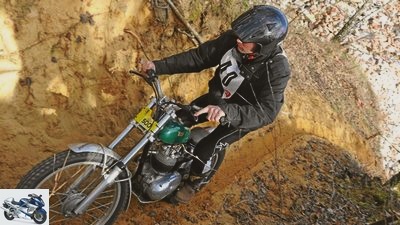
Siemer
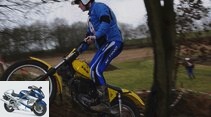
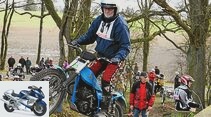
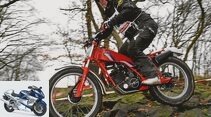
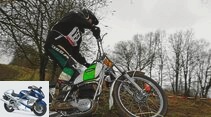
25th pictures
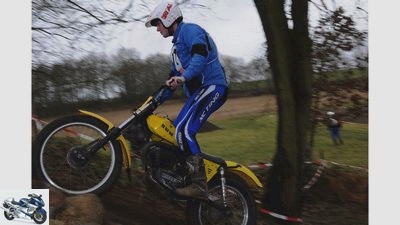
Siemer
1/25
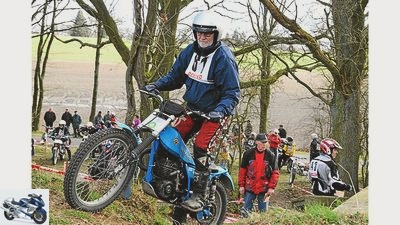
Siemer
2/25
A 325 Bultaco from 1979 is certainly one of the strongest that started in Brockhofe, …
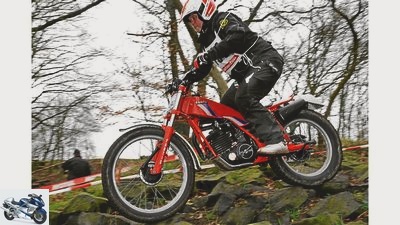
Siemer
3/25
… the Italian Fantic is certainly the most modern.
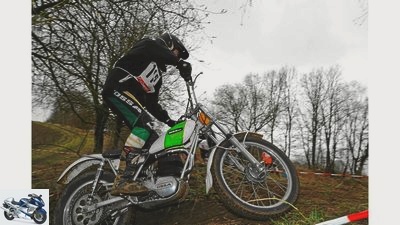
Siemer
4/25
The Ossa of the Dane Villy Kyndesen dates from 1976, in the front of the twin stools.
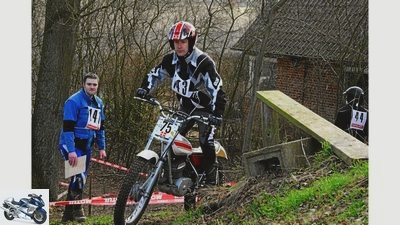
Siemer
5/25
From the mid-1970s onwards, the Yamaha TY 250 was considered the best trial machine on the market.
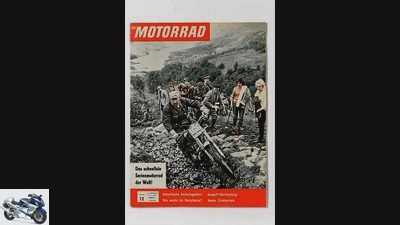
Siemer
6/25
… in the style of his great role model Gordon Jackson on AJS.
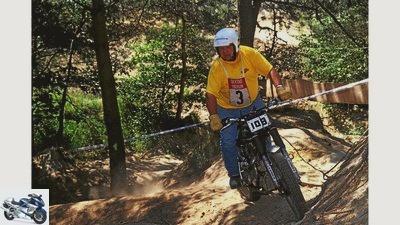
Siemer
7/25
Rudi Munstermann 1999 in Hoope …
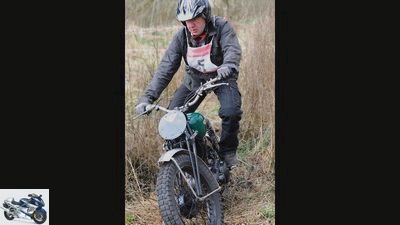
Siemer
8/25
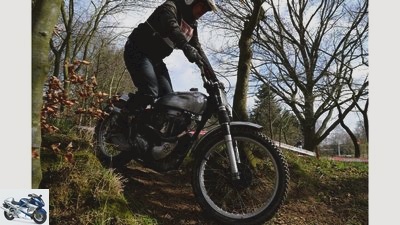
Siemer
9/25
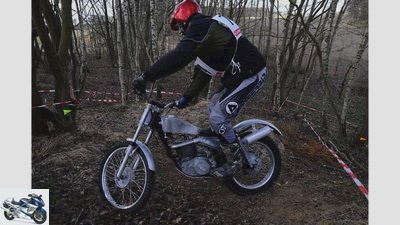
Siemer
10/25

Siemer
11/25
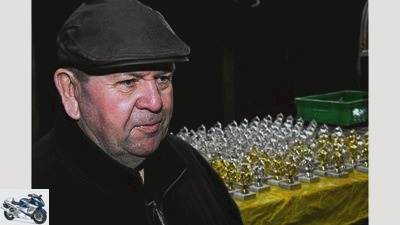
Siemer
12/25
“The Bultaco could pull through brutally, the Montesa could sneak, but then the Ossa came and could do both.”
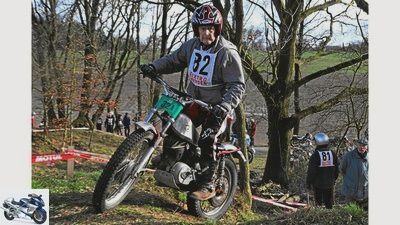
Siemer
13/25
This 250 Zundapp from 1956 is fit and fit. And the first driver, Manfred Westermann, is built in 1930.
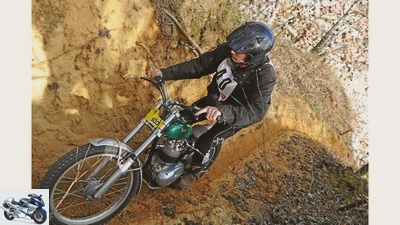
Siemer
14/25
On the BSA B40 from 1964, Mathias Sub was one of the best. One penalty point on both days – Greetings from Gordon Jackson. Or so.

Siemer
15/25
60 years of trial history brings Rudi Mustermann to life in half an hour.
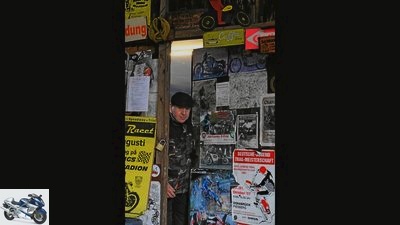
Siemer
16/25
Those who have completed their 60 sections can go to the warm workshop for coffee and cake.
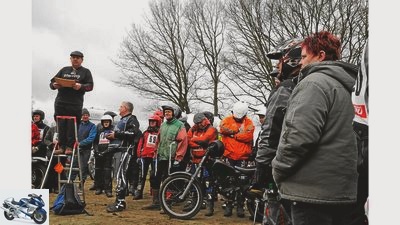
Siemer
17/25
“The big four-strokes play music that goes straight to the heart, that accompanies you all your life.”
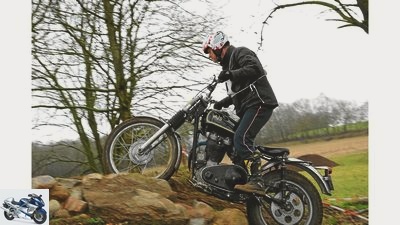
Siemer
18/25
In the footsteps of the AJS stars Jackson and Viney: Model 16 was the hottest device in the 1950s.
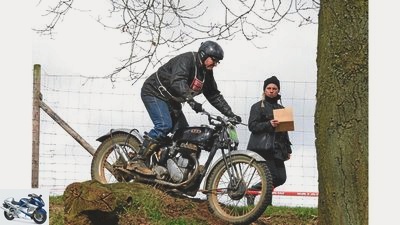
Siemer
19/25
As a real warhorse, this BSA M 21 knows no fear. But she also knows little about ground clearance.
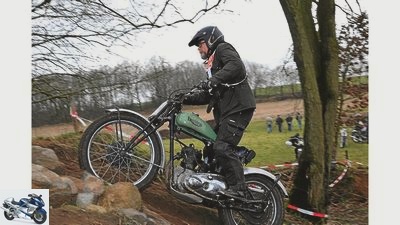
Siemer
20/25
Soldiers used to do gymnastics with bikes like the 350cc Triumph …
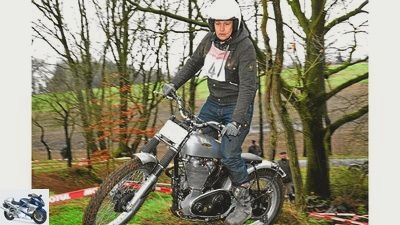
Siemer
21/25
… the parallel model to the AJS 16, the Matchless G3, still with a rigid frame.
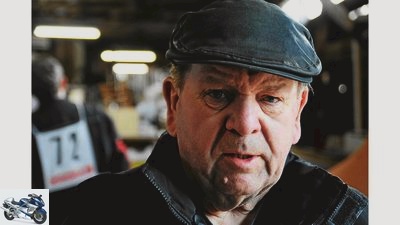
Siemer
22/25
“The machine has to react tenderly, and this is where low compression or, with the two-stroke engine, small channels help.”
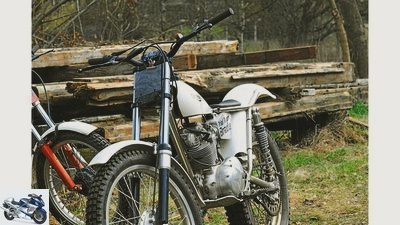
Siemer
23/25
This is what the Big Irons’ bogeymen looked like: A Triumph Cub is waiting here, …
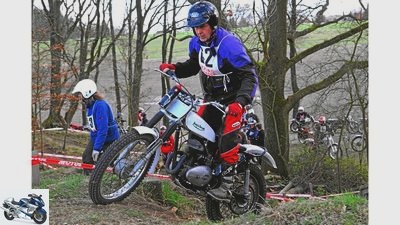
Siemer
24/25
… here a 57 Francis Barnett scrambles through the forest.
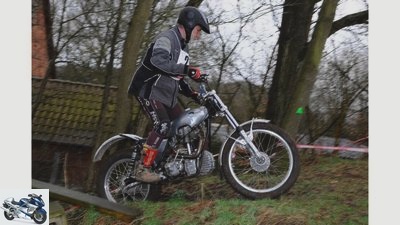
Siemer
25/25
Sports & scene
Portrait of Rudi Munstermann
Portrait of Rudi Munstermann and his Fourstroke Trial
Section for life
Content of
Some call it the soul of the German veteran trial, others the engine. But Rudi Munstermann doesn’t care. He can’t do without it and just keeps going. Preferably non-stop and on your own doorstep at his legendary Fourstroke Trial in Brockhofe.
Fred Siemer
05/22/2014
One Norton 500 T heaves a meter higher on the slope with every revolution of the crankshaft, a BSA C15 outwits the root passage with targeted thrusts, a Zundapp 250 S growls up the steep section in second gear, and one Yamaha TY 250 circles through the group of trees centimeter by centimeter. If you only watch for half an hour, you get to see almost everything that has been allowed to play in trials in the last 60 years in an abandoned sand pit on the edge of the Luneburg Heath. Montesa, Ossa and Bultaco from Spain, Fantic, Beta and SWM from Italy, AJS, Royal Enfield, Francis-Barnett, Triumph and Matchless from England, Honda, CZ and MZ, a few more exotic ones. Right in the middle of all the noise is the director of this two-day trial show: Rudi Munstermann (75), master carpenter and trial fan with all his heart.
Buy complete article
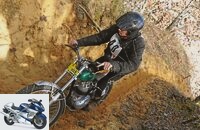
Portrait of Rudi Munstermann and his Fourstroke Trial
Section for life
8 pages) as PDF
€ 2.00
Buy now
Rudi is blessed. His sport! Presented with wonderful machines and by lots of like-minded people. For the 49th time they are stored on the premises of his carpentry shop, and went to the first sections directly behind the house. Over 130 drivers, from all over Germany, from Holland, Scandinavia and Austria, almost all of them enthusiastic repeaters. The Fourstroke Trial in Brockhofe has long been a classic, as has its inventor. But it is wrong who thinks Rudi Munstermann is a grandfather clock just because he has called the AJS 16 C his dream motorcycle for 55 years or has been raving about a certain Gordon Jackson. You have to understand that, both were sensational. At least for those Germans who had heard of trials in the 50s. Just like in motocross, the drug only seeped in droplets from England into the booming Federal Republic, and occupation soldiers gave their first object lessons on their army machines.
1958 Munstermann takes part in the Hellkuhlen Trial
The British, on the other hand, reaped stormy enthusiasm in the Benelux countries, where prestigious major events soon took place, and so Ernst “Klacks” Leverkus toured to the Trial Laborelle in 1957. In short: he was overtaken by pure enthusiasm near Brussels – and lasted at MOTORRAD for at least ten years. The euphoric reporter mentioned Gordon Jackson’s victory rather casually, but he realized with razor sharpness that Trial was suitable “to enable sporting activities also for those who cannot afford a broken machine and damaged bones every Sunday. It’s the path to popular sport with a simple rating. ”Klacks didn’t have to reveal that to the researching Rudi Munstermann, who, along with his brother, was one of northern Germany’s trial pioneers, had already exchanged his redesigned Triumph Cornett for – of course – AJS and took it thus in 1958 as one of 85 starters in the first big Hellkuhlen Trial.
The purchase decision was also confirmed by MOTORRAD in the period that followed: The trial fans Klacks and Crius repeatedly reported on the successes of Gordon Jackson, who honored the legendary fourth victory of the AJS factory driver in 1961 at the Scottish Six Days Trial with just one penalty point on six days of driving Editing in issue 12/1961 even with a full-page cover picture. Rudi Munstermann was deeply touched. And yet he knew that the trial machine park was changing both fundamentally and irreversibly. Only the supercracks with their factory machines, which have been lightened to around 120 kilos according to all the rules of the art, moved large-volume four-stroke engines. Jackson’s AJS and Sammy Miller’s Ariel have long faced an armada of two-stroke engines like Greeves, James, DOT and Francis-Barnett. Modern, compact four-stroke engines also drove forward, in 1959 Roy Peplow had already won the Six Days on a 200cc triumph, in 1962 Arthur Lampkin won the BSA C15. In the same year, three thick ships were ranked among the top ten, in 1964 they came to five for the last time – in ideally dry weather and great traction.
The best AJS driver was called Mick Andrews, Gordon Jackson had already quit, but Rudi with the ex-street AJS, who was emaciated to 130 kilos, held the flag high. Crazy? You can also see it differently: Even then, the man was simply one step further. He wanted to be fun, not trophies. And Rudi had the most fun when his 350cc Langhuber pounded him through the sections. He was a lonely and avowed heavyweight in a consumptive industry, and everyone has called him Mr. Fourstroke ever since.
Twinshock four-stroke at the Fourstroke Trial
Rudis Ballermann had just broken in when Sammy Miller left Ariel’s development department and built for Bultaco a two-stroke trialer. It followed on from earlier and quite successful Sherpa conversions. Miller won Scotland in 1965, his first win on a non-English motorcycle. The production model Sherpa T became the first sales hit in trial history, the consequences of which Rudi Munstermann is currently viewing in the sand pit of Brockhofe, where he can see the two-stroke twin stools on the tunnels: From 1965, Spanish motorcycles, starting with Bultaco, climbed all the others. Montesa had also been toying with the trial for a long time and brought the legendary Cota 247 in 1968, Ossa took a little more time, hired Mick Andrews, who won three Scottish and two European championships with it in the early 1970s. The MAR (Mick Andrews Replica) is one of the Catalans’ bigger sales successes, but because their finances did not allow for a new, more compact engine, Mick moved on and helped Yamaha with the TY 250. It also carried him to the top, and its successors are climbing Rudi now around by the dozen.
As a still active carpenter and chainsaw user, Rudi can hardly complain about two-stroke engines. No, seriously: he tried it himself for years, placing a Greeves next to the AJS in 1967, and later a 325 Bultaco as well. In addition, he is simply happy about everyone who participates, and the robust two-stroke twin stools are great as an inexpensive entry-level device. If you want, you can also four-stroke for a little more money. With an offshoot of Sammy Miller’s late work: the old master hired Honda in 1974 and devised the concept of the four-valve engine with which Rob Shepard first became British champion and then – almost as importantly – Eddy Lejeune achieved his world championship triple from 1982. Around these successes, the Japanese got into the business and put on lively 125cc to 250cc, assembled as twin shock four-stroke at the Fourstroke Trial.
Used trials on markt.motorradonline.de

Sports & scene
Portrait of trail legend Edgar Kindsvogel
Edgar’s world from the trail
read more
1984 Talmag Trophy Trial
Two of them will finish the two rounds of 30 sections with a single penalty point, and two twinshock two-stroke engines will also succeed in this feat. A dedicated BSA B40 driver who can do the same earns even more respect. Anyone who now claims that the trial could be very easy with five ones, Rudi first refers to Gordon Jackson. And secondly, on the deeper meaning: When setting up the sections, his son Sven wants to challenge everyone, but not overwhelm anyone. Not the beginners and not the rigid frame class riders. For the latter, the Munster men here and there issue a particularly difficult section or passage. The heavy irons should all come back, because nothing points more to the beginnings of the trial than these old Englishmen. Built at a time when, in the absence of a continuously asphalted road network, it made sense to practice crossing creeks, to train on meadow slopes and to reduce the fear of stone steps. With a normal motorcycle. Which is why the Rigids in Brockhofe barely have 15 centimeters of ground clearance, with an estimated two meters of wheelbase and a weight of 200 kilograms. Fourstroke-Rudi shows his respect and takes off his hat.
He has carried a case of soft drinks into the sand pit, many are taking a sip, and even more are stopping for a short chat. Rudi beams and laughs his mischievous laugh. In this scene he has found his final sporting home. Wrong: With all his dedication, he largely created them himself. Already in 1981, less than ten years after his last modern trial, his sporty reconsideration began among some Luneburg friends. In March, nine old boys made a pilgrimage to Rudi in Brockhofe, in autumn they were already 16. In England, he knew, there should be even more crazy people: off to the Talmag Trophy Trial !. Although Rudi started south of London in 1984 as the first continental, he had one of the younger motorcycles with the BSA C15. Big Irons everywhere, preferably with rigid frames, paradise seemed close.
FIM Europe wants Classic European Championship 2015
The Fourstroke Trial also quickly attracted 50 participants and more, the old organizer was asked again. The chief scientist. Rudi Munstermann gave it to MC Uelzen from 1966 onwards. In the Hellkuhlen. Holy ground, famous for its hair-raising sections on steep sandy slopes, honored annually with a tough DM run. And ennobled in 1970, when the EM stopped here. The eternal ID driver Munstermann ahead, with arrows and ribbons and sharpened pieces of wood to unplug the sections. In his tow Mick Andrews, who has just won the Scottish Six Days, as an interested observer and advisor. No wonder that his Ossa crossed the finish line two points ahead of the ambitious Gustav Franke’s Zundapp. Rudi laughs about it, and he laughed a lot back then too: Andrews is just one of the same people.
The Trialers are all made of a special kind of wood. When Rudi climbs up his little stepladder again on Sunday morning and asks for the driver’s briefing, bitterly cold wind whips through the surrounding oaks. Much to the annoyance of the chief scientist, there is no danger of snowfall, but everyone is hurrying with their 30 sections. Just quickly to the hot stove in the carpentry, warm up with coffee and cake. Make appointments, make plans. For 2015, FIM wants to delight Europe with a Classic EM. Rudi is already working in an advisory capacity. His most important tip: Always stay on the carpet. Then he goes to the cup ceremony. This takes a while. Every starter gets one. That’s Rudi.
Info and tips
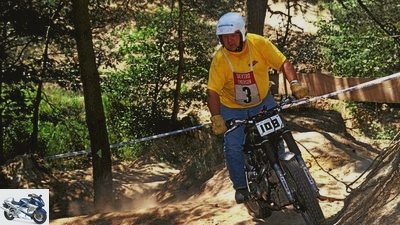
Siemer
Rudi Munstermann in Hoope 1999 in the style of his great role model Gordon Jackson on AJS.
Very early on, the trialers took their old crampons out of the shed in order to chase them over hill and dale again. From the beginning, Rudi Munstermann was one of the driving forces. There is now not only a Germany Cup and other German series, but also a Eurocup. Because the trialers are more of the tough, their competitions are spread over almost the whole year. The classification is mostly the same as in Brockhofe: rigid frame, pre unit (engine and gearbox in separate housings) before 1965, block engines before 1965, twin stool from 1965. The last classes are often divided into two and four-stroke engines.
Events with a great variety among the starting machines are particularly interesting, and therefore here are some tips from Rudi himself: If you are looking for Fourstroke to the point, you should leave for the veteran event in early May immediately before the Scottish Six Days Trial in Fort William, there will be over 300 originals on. Also sensational, but more for the toughest: The Talmag Trophy Trial always starts at the end of January. As part of a gigantic oldie event, a great trial will take place on August 2nd and 3rd, 2014 in Linkoping / Sweden. Ditto on June 7th and 8th a Eurocup run in Gressenich near Aachen and a D-Cup run in Hergenroth in the Westerwald on 26/27. July. Further dates at www.a-trial.info.
Related articles
-
Fred Siemer 16 pictures Fred Siemer 1/16 Norbert Schuller knows the sensitive Konig four-cylinder like no other. Fred Siemer 2/16 Every handle has been…
-
2snap 6th pictures Friedemann Kirn 1/6 Toni Bou has already won 20 world titles in the trial. Friedemann Kirn 2/6 Superstar without special requests -…
-
Scene: Portrait of two-stroke fan Scherubl
Siemer 15th pictures Siemer 1/15 The two-stroke fan Gunter Scheruebl transforms old series motorcycles into racing replicas. Siemer 2/15 Scherubl can…
-
Portrait of racing machine collector Wolfhart Krischke
Fred Siemer 14th pictures Fred Siemer 1/14 Wolfhart Krischke’s racing machine collection. Fred Siemer 2/14 King with BMW gearbox and cardan. Fred Siemer…
-
motorcycles Company portrait boxer Company portrait boxer Training camp From a tuning company to an independent design forge, the Boxer company has…
-
Portrait of motorcycle collector Wolfgang Lindfeld
Fred Siemer 9 pictures Fred Siemer 1/9 At the collector Wolfgang Linfeld Fred Siemer 2/9 Best of show: The Turbo-Suzuki XN 85 was built from 1983 to 1985…
-
Shoei Japan 10 pictures Shoei Japan 1/10 This is how a Shoei helmet is made. Shoei Japan 2/10 All overhangs that have arisen during production are…
-
Company portrait of Continental
Graphics: Continental 18th pictures Bilski 1/18 Concentrated Conti input for MOTORRAD (from right): Motorcycle World Sales Director Bettina Lehmann,…
-
Felix studio to travel Portrait: Harley Club Beijing Conspiratorial meeting with the Beijing outlaws East goes West In a quiet corner, hidden in the…
-
Sdun 25th pictures Siemer. 1/25 In focus: Fritz W. Egli. Siemer. 2/25 In focus: Fritz W. Egli. Siemer. 3/25 In focus: Fritz W. Egli. Siemer. 4/25 Thickly…